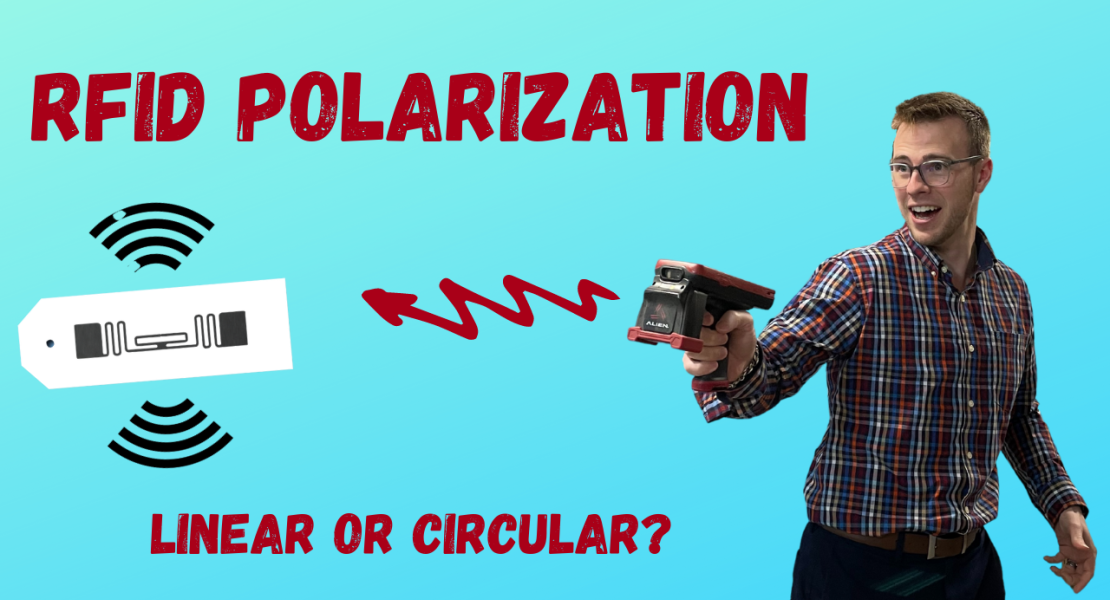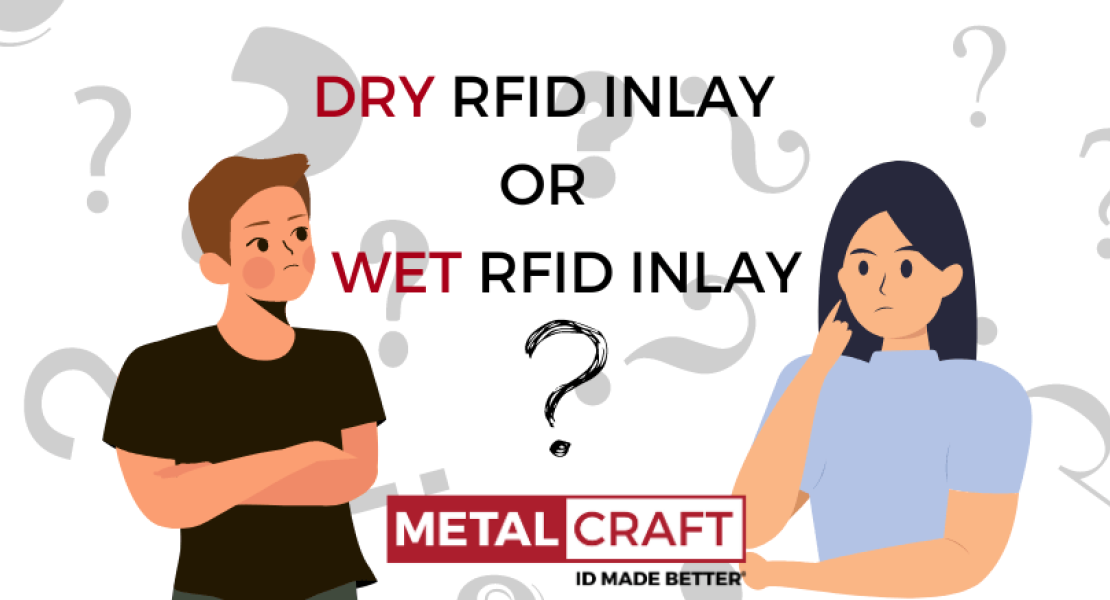Reading this article can save you thousands of dollars. Did that get your attention? It should. This article addresses a common mistake we’ve seen many companies and customers make when they go to purchase their RFID reader that literally cost them thousands of dollars in lost time and the wrong equipment.
What is this money-saving tip? Simply stated, understanding polarization or polarity. Many people don’t understand there is a certain polarity to the antenna found in an RFID reader. There are two main types of polarization to be aware of before purchasing an RFID reader – linear polarization and circular polarization. Linear polarization means that the RFID antenna is transmitting the RFID signal on a single plane. In other words, it's either horizontal or vertical transmitting out of the antenna. How does that affect the performance of the reader when you're going to read your RFID tags?
The inlay in the image shown is a common RFID inlay found in a UHF RFID system. It is a symmetrical dipole antenna so if the linear polarized antenna is reading on this plane it's going to pick up this RFID inlay. However, if the RFID inlay is rotated 90 degrees and we try to read it with a horizontal linear polarized antenna the performance is going to significantly drop, sometimes down to a few centimeters.
How can you avoid something like this happening to you? Well, let's look at the other type of polarization – circular polarization. There are two types of circular polarization you'll find when you look at the specs of an RFID reader antenna – RHCP, or right-hand circular polarization, and LHCP, or left-hand circular polarization. For right-hand circular polarization, the antenna transmits in a clockwise rotation and for left-hand circular polarization the antenna transmits in a counterclockwise rotation. So how does that help performance? Regardless of how the RFID inlay is oriented the circular polarization will pick it up just fine – even if you rotate it, it's still going to pick it up because of the polarization pattern that's outputting from the RFID reader.
Now you're probably asking why would anyone ever use a linear polarization when a circular polarized antenna can pick up any orientation of the inlay? The answer is simple – read distance. Linear polarized antennas can get longer read ranges because it's outputting the reader power only on a singular plane; whereas a circular polarized antenna is operating in two planes, which takes more power. A good rule of thumb is a linear polarized antenna can read about two times the distance of a circular polarized antenna.
There are other variables you should consider when purchasing your first RFID reader, and knowing if you can control the orientation of your RFID tags is definitely an important factor.
For more information or to speak with one of our RFID Specialists, please contact us at 800-437-5283 or [email protected].
 | About the Author: Aaron HobertAaron Hobert is our RFID Technical Specialist. Hobert joined Metalcraft in September of 1994 as a Litho Press Operator, became the Autograph Team Lead in 1998 and in April 2005 he became the RFID Sales Support Rep. He was named our RFID Technical Specialist in 2008. Aaron lives outside Charles City with his wife Diane. Mobile Phone: 641-330-2660 Email: [email protected] Office: 3360 9th St. SW, Mason City, IA 50401 Office Phone: 641-423-9460 |




